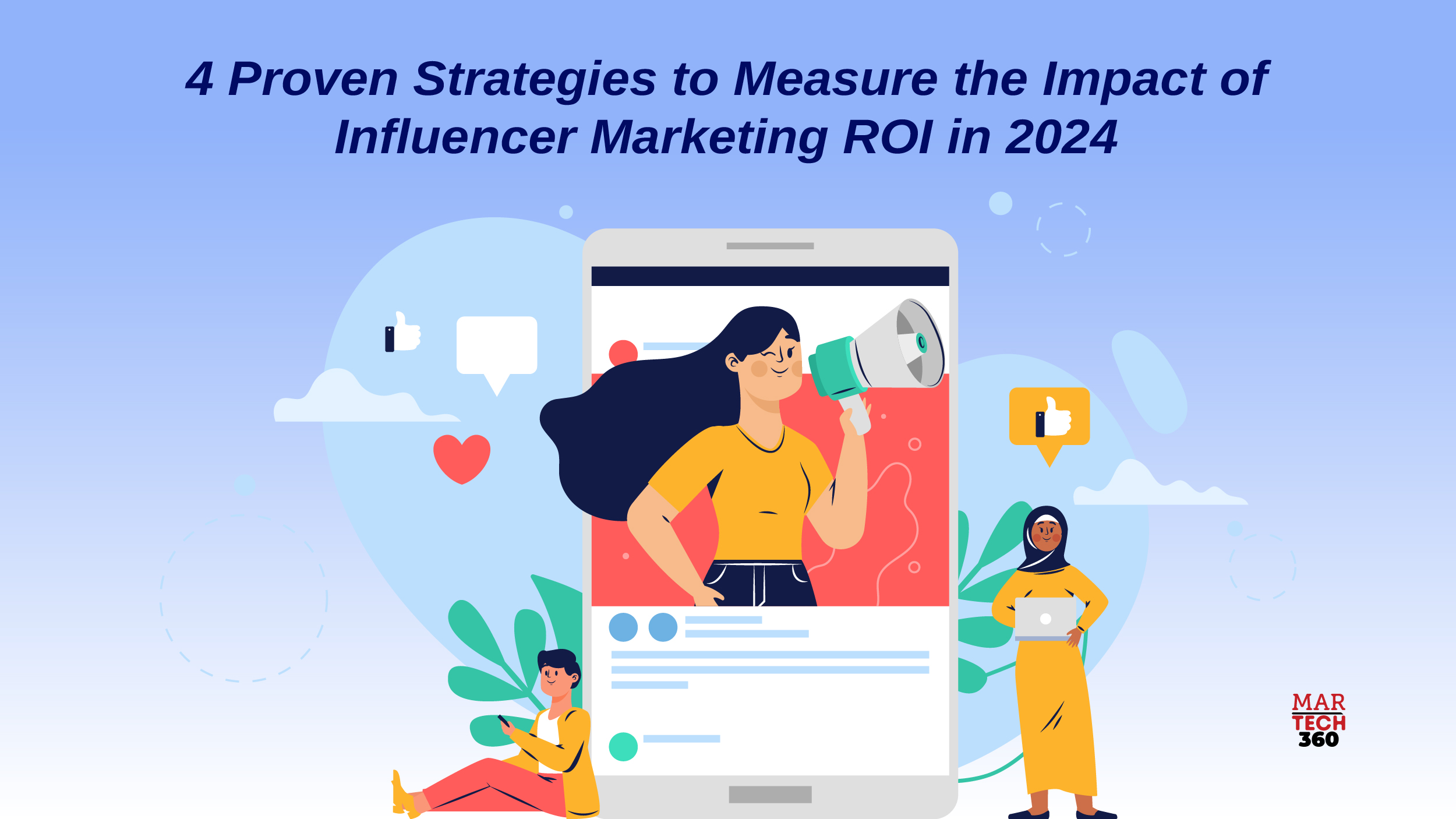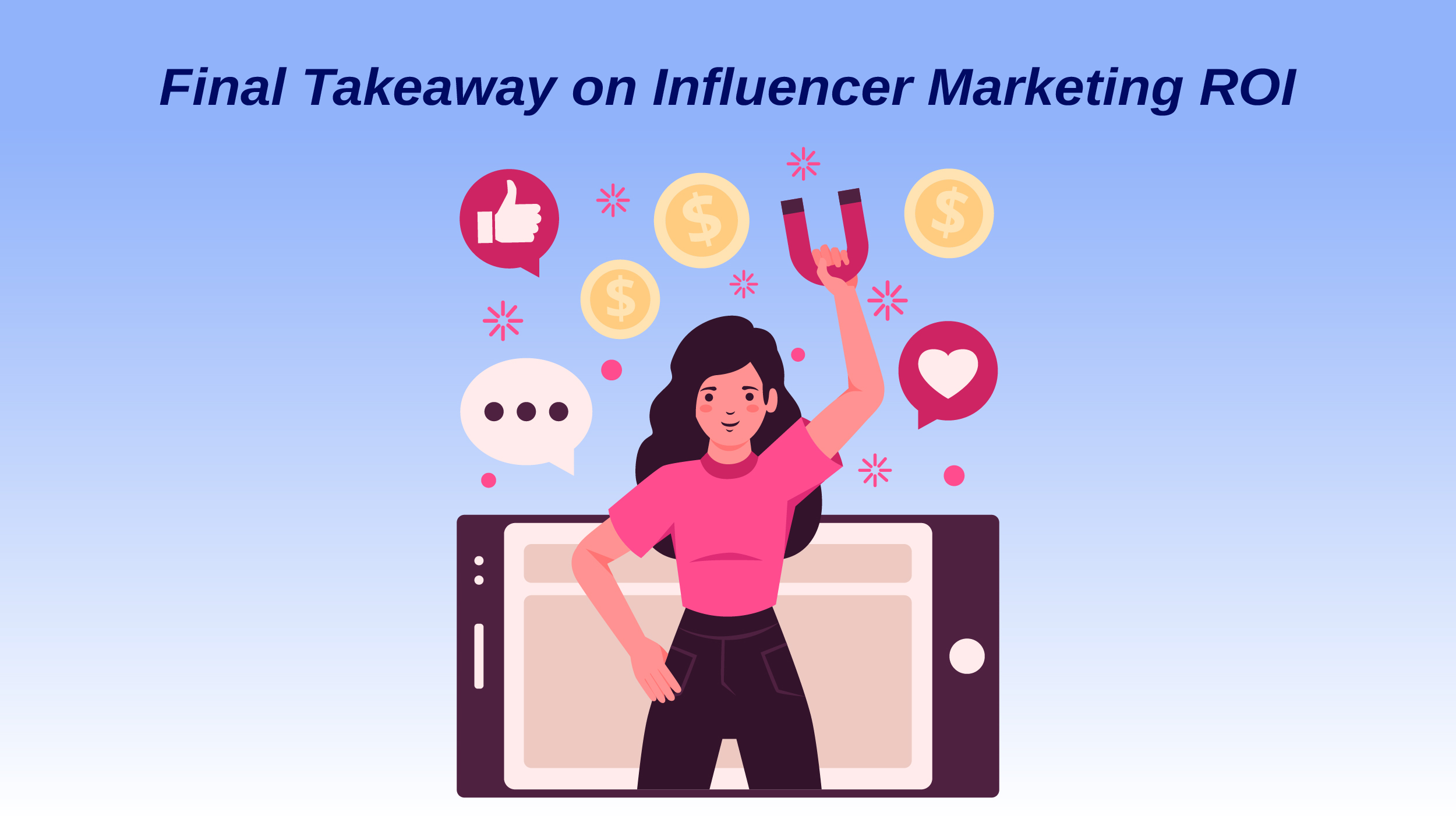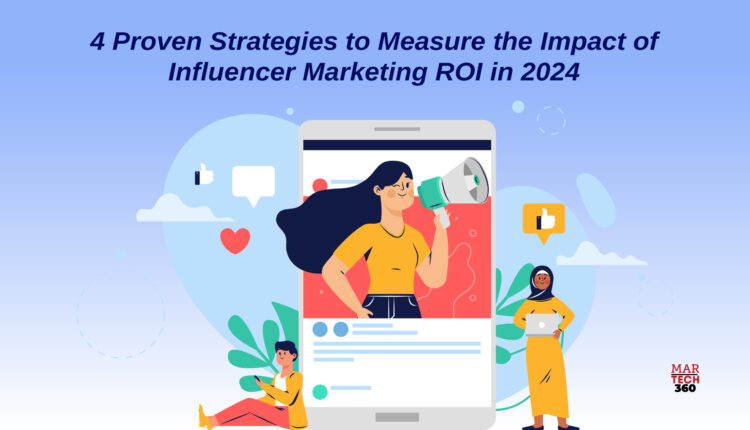The influencer marketing industry is on a steady growth trajectory, projected to reach $21.3 billion by the end of 2023. Businesses across various sectors and sizes are adopting this strategy to enhance brand awareness, drive sales, and foster genuine connections with their audience. The industry’s remarkable growth can be attributed to the effectiveness of influencer marketing, backed by studies indicating impressive return on investment (ROI). The top 13% of brands have reported earning up to $20 for every $1 spent. Influencer marketing ROI is exactly what will be covered in this blog.
Despite these encouraging statistics, calculating influencer marketing ROI remains a challenge for individual brands and marketing teams. This difficulty arises from the diverse range of short-term and long-term goals associated with influencer marketing, often revolving around building brand awareness—an aspect notoriously challenging to measure.
What is Influencer Marketing?
Influencer marketing is a type of marketing in which brands collaborate with influential individuals, popularly known as ‘influencers’, to promote their products or services. These influencers have a dedicated following on social media platforms, such as Instagram, YouTube, or TikTok, and their followers trust their recommendations and opinions.
The concept behind influencer marketing is to leverage the influencer’s credibility and reach to connect with the target audience in an authentic and relatable way. Instead of directly advertising their products or services, brands work with influencers to create content that showcases their offerings more organically and engagingly.
Why Measure Influencer Marketing ROI?
Measuring influencer marketing ROI serves several crucial purposes.
Firstly, it helps secure support from senior management, particularly in cases where influencer marketing is a relatively new channel. Clear metrics and a well-presented campaign wrap deck can address skepticism and demonstrate impact, especially when focusing on goals like brand awareness and engagement.
Secondly, ROI measurement enables a deep dive into campaign performance, identifying what works best. Whether it’s a successful affiliate marketing campaign or a brand ambassador program driving awareness and sales, understanding these outcomes allows for strategic reinforcement of high-performing activities.
Lastly, measuring influencer marketing ROI assists in recognizing top-performing influencers, and facilitating the reward of their contributions. This not only nurtures relationships but also opens avenues for long-term brand partnerships, contributing to the overall success of influencer marketing efforts.
4 Top Methods to Measure Influencer Marketing ROI
 Below are the four best ways to measure influencer marketing ROI.
Below are the four best ways to measure influencer marketing ROI.
Immediate Sales
Objective: Drive direct and trackable sales through influencer marketing.
Suitable for brands with:
- Lower purchase points.
- Short customer journey (e.g., fashion, makeup).
- Social media presence with storefronts.
- Established awareness and affinity with the target audience.
- Ability to offer exclusive discounts through influencers.
Metrics to evaluate:
- Unique links: Trackable links using tools like UTM or Bitly.
- Promo codes: Unique discount codes personalized to influencers.
- Direct sales tracking through influencer marketing platforms.
- Additional strategy: Boost sales through branded content ads, repurposing influencer content for Facebook and Instagram ads, resulting in an up to 82% increase in purchase outcomes.
Also Read: Programmatic Native Advertising: What You Need to Know
Brand Awareness
Objective: Measure how familiar the target audience is with the brand.
Relevant for brands:
- Entering new markets.
- Smaller brands in competitive markets.
- High-consideration purchase brands (e.g., expensive tech or furniture).
- Brands with long or time-based sales cycles (e.g., pregnancy products, cold & flu remedies).
Metrics to evaluate:
- Impressions: Number of times content is shown.
- Reach: Number of unique people who see the content.
- Branded search volume: Volume of people searching for the brand’s name.
- Social media mentions: Number of direct mentions on social media.
- Traffic: Number of visitors to the website, specifically from influencer posts.
Note: Brand awareness is also suitable for smaller, niche brands aiming to build awareness within a specific target audience.
Brand Engagement
Objective: Inspire engagement from the target audience on social media or the brand’s site.
Relevant for all brands aiming for long-term growth.
Metrics to evaluate:
- Likes, comments, retweets, post saves, clicks, add-to-carts.
- Cost per engagement (CPE).
- Email subscriber count growth.
- Follower growth on social channels.
- Importance: Critical for forecasting long-term growth, indicating brand love, and gauging purchase intent from existing and potential customers.
Note: Successful influencer marketing campaigns should generate engagement across various platforms, including TikTok, Instagram, and LinkedIn.
Influencer-Generated Content (IGC)
Objective: Measure the impact of content created by influencers in partnership with the brand.
Benefits:
- High-performing influencer content (60% reported better performance compared to branded content).
- Cost-effective content creation by repurposing influencer content.
- Negotiating rights to influencer content is less time-consuming and more cost-effective than professional studio shoots.
How to Calculate Content ROI for IGC:
- Assess money saved on content production, including filming, photography, writing, talent, location, etc.
- Consider the impact on objectives like follows, add-to-carts, sales, and revenue.
- Compare costs gained to costs saved for overall IGC ROI.
Data Points to Consider:
- Total media value.
- Content performance across channels.
- Costs saved by generating content through influencers.
- Time saved by generating content through influencers.
Example: Icon Fitness leveraged IGC to increase content ROI by 10x, boosted ROAS (return on ad spend) by 5x, and saved over $10K on content creation costs.
Final Takeaway on Influencer Marketing ROI
 From a broader perspective, influencer marketing ROI can contribute significantly to various marketing goals. To unlock its potential for boosting business growth, it is crucial to comprehend the comprehensive impact of these initiatives and establish realistic objectives.
From a broader perspective, influencer marketing ROI can contribute significantly to various marketing goals. To unlock its potential for boosting business growth, it is crucial to comprehend the comprehensive impact of these initiatives and establish realistic objectives.
Before embarking on an influencer marketing campaign, it’s essential to clearly define your goals. Consider factors such as your business’s current stage, product pricing, and sales cycle. Tracking both quantitative key performance indicators (KPIs), such as the number of likes and sales, and qualitative data, such as comment sentiment and follower authenticity, allows for a more accurate assessment of the genuine value derived from your influencer programs.


Comments are closed.